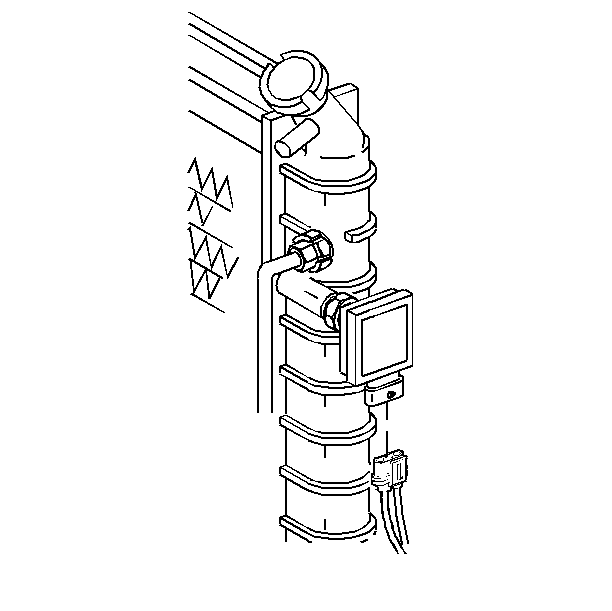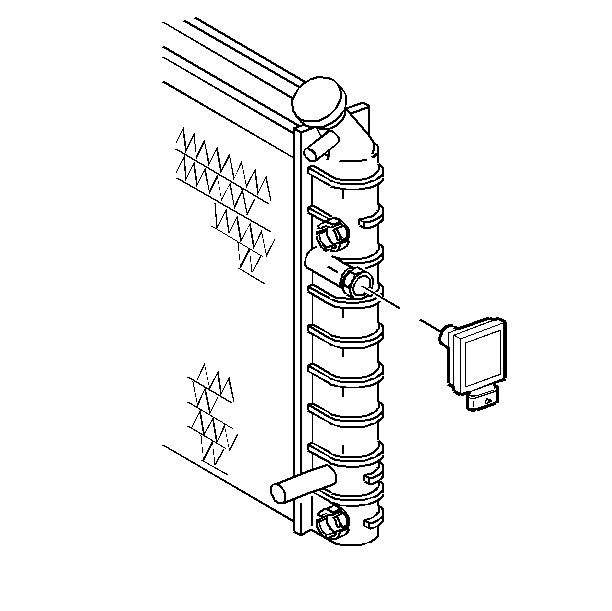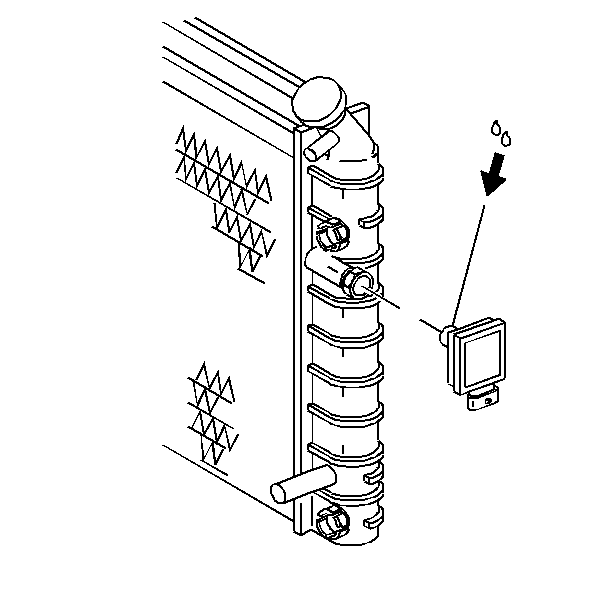Removal Procedure
- Disconnect the negative battery cable.
Refer to
Caution: Unless directed otherwise, the ignition and start switch must be in the OFF or LOCK position, and all electrical loads must be OFF before servicing any electrical component. Disconnect the negative battery cable to prevent an electrical spark should a tool or equipment come in contact with an exposed electrical terminal. Failure to follow these precautions may result in personal injury and/or damage to the vehicle or its components.
in General Information. - Partially drain the coolant from the radiator. Refer to Cooling System Draining and Filling .
- Disconnect the electrical connector from the module.
- Remove the module. In order to unlock the module, lift one leg of the snap clip from the clip's locked position. Pull the module outward with a slight twisting motion.
- Inspect the condition of the module o-ring seal.
Notice: When adding coolant, use DEX-COOL® coolant. If silicated coolant is added to the system, premature engine, heater core or radiator corrosion may result. In addition, the engine coolant will require change sooner-at 50 000 km (30,000 mi) or 24 months.


Installation Procedure
- Lubricate the o-ring seal of the module with coolant.
- Position the snap clip leg into place.
- Install the indicator module to the radiator.
- Connect the electrical connector to the module.
- Refill the coolant. Refer to Cooling System Draining and Filling .
- Connect the negative battery cable.
- Start the engine. After the engine reaches normal operating temperature, check for coolant leaks.



Tighten
Tighten the negative battery cable bolt to 15 N·m (11 lb ft).
Notice: Use the correct fastener in the correct location. Replacement fasteners must be the correct part number for that application. Fasteners requiring replacement or fasteners requiring the use of thread locking compound or sealant are identified in the service procedure. Do not use paints, lubricants, or corrosion inhibitors on fasteners or fastener joint surfaces unless specified. These coatings affect fastener torque and joint clamping force and may damage the fastener. Use the correct tightening sequence and specifications when installing fasteners in order to avoid damage to parts and systems.
